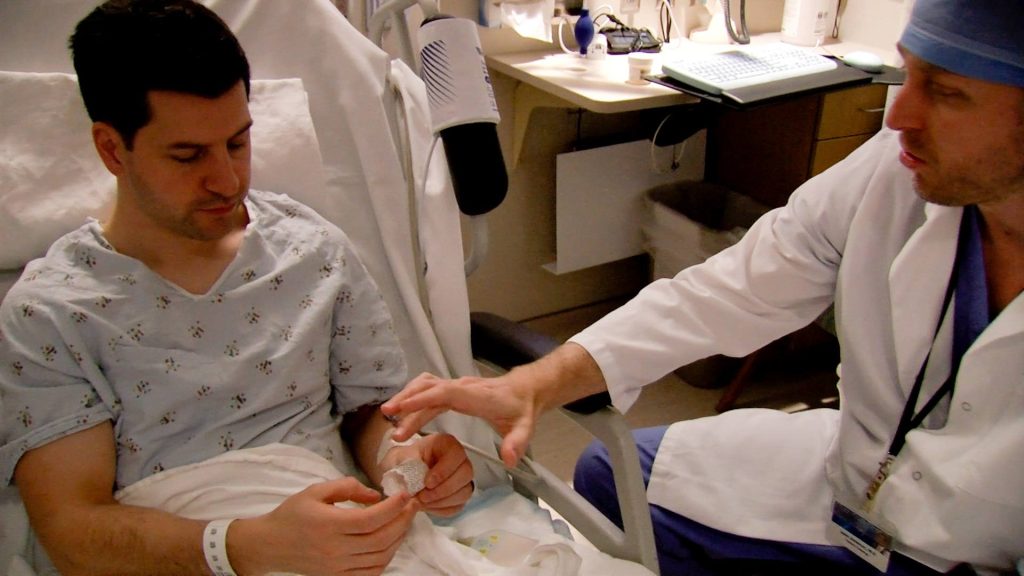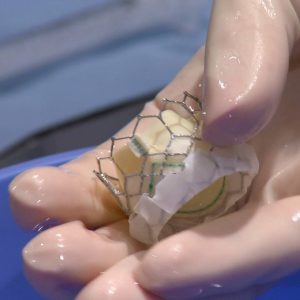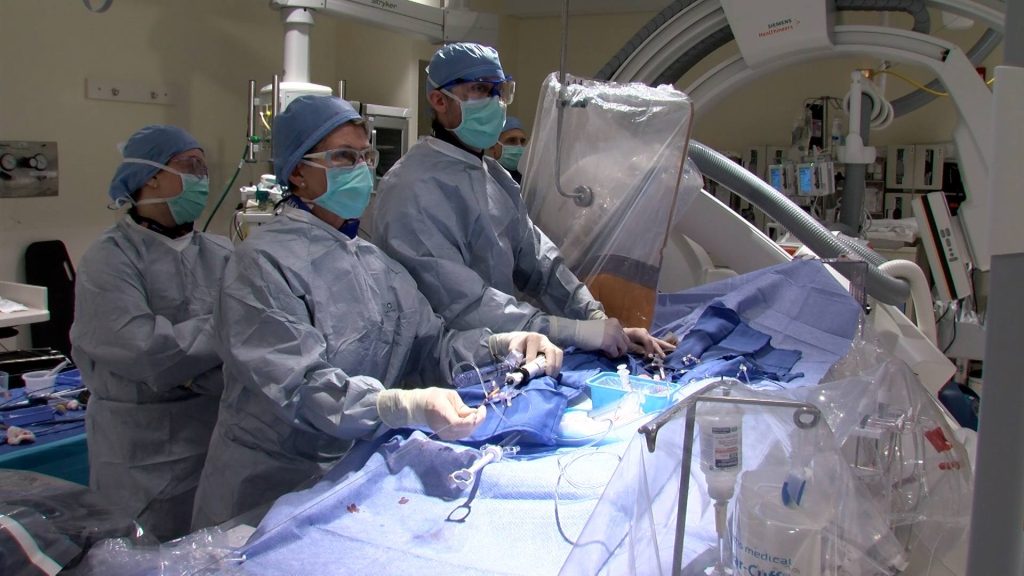
A general manager of a professional sports team is a job that inherently comes with a high amount of stress, difficulty and demand — making important decisions that affect the future of a franchise.
But recently at Mayo Clinic, Chicago Blackhawks GM Kyle Davidson made a crucial choice about his personal health that affects his own future — undergo another open-heart surgery or have a less invasive procedure to repair his heart.
Journalists: Broadcast-quality video pkg (4:08) is in the downloads at the end of the post. Please courtesy: "Mayo Clinic News Network." Read the script.
It's something Chicago Blackhawks General Manager Kyle Davidson has had to deal with all his life.
"I was born with tetralogy of Fallot. It's a congenital heart defect. I needed two open-heart surgeries right around when I was a year old," Kyle says.
Five years ago, at the age of 31, Kyle had another open-heart surgery to place a new pulmonary valve inside his heart.
"It's pretty heavy surgery and long recovery. It was about one and a half, two months," he says.
But five years later, he's having trouble with his heart again.
"I've had a couple, you know, I'd call them episodes over the last number of months, where it didn't feel normal," Kyle says.
And at 36 years old, he's back in the hospital.
"I've learned that that valve is no longer working properly again, and intervention was needed," Kyle says.
"He was noticing a limitation in his ability to exercise to his peak potential. And when we hear a limitation for exercise tolerance, to me, that is a big red flag," says Dr. Jason Anderson, an interventional cardiologist at Mayo Clinic. "His valve was regurgitant, meaning he would send the blood forward. Part of the blood would come backward, and part would go forward. So every heartbeat, he's having some wasted flow that he's trying to keep up with. So your body compensates for that by trying to go faster and beat harder."

A replacement pulmonary valve is needed. There are two options: another open-heart surgery or a less invasive transcatheter procedure.
"With all things being equal and having the two options on the table, I certainly preferred and was happy that the transcatheter approach was something that was applicable to my case," Kyle says.
"Compared to 2019 when I had my open-heart surgery, I'm just at a very different point in my life, you know. I do have the general manager's job. I do have two kids that weren't around five years ago. You have to make sure that you're putting yourself in the best situation, from a health standpoint, to be there for them for a long time," he adds.
At Mayo Clinic, pulmonary valve replacement can be performed on eligible patients as a same-day transcatheter procedure — meaning no open-heart surgery and, typically, no hospital stay. It requires only a mild form of sedation and usually takes under an hour to perform.
"The procedure is basically to give him a new valve within his existing, surgically placed valve. We do that through a catheter method, where you place equipment into the heart. We work through a large tube that goes through the vein in his leg," says Dr. Allison Cabalka, an interventional cardiologist at Mayo Clinic.
"When that valve is deployed and opened, in the next heartbeat, he has his new valve functioning brand-new, right out of the box," says Dr. Anderson.
Another aspect of this procedure that sets Mayo apart is that it’s done in tandem by two Mayo Clinic cardiologists through a method called co-scrubbing.
"When Dr Anderson and I are working together, we often think of it as two co-pilots," says Dr. Cabalka. "If we have anything that's unexpected, we have collaborative decision, we have immediate response, and we have the ability to take care of any potential complications or any potential barriers to success to make that procedure go as smoothly as possible."

And just a few hours after the procedure, Kyle is out of the hospital, heading home and back to work.
"I'm very fortunate that there are medical advances to the point where I don't have to step away, I don't have to miss any significant time," Kyle says.
Kyle’s experience is typical for patients at Mayo Clinic undergoing this procedure.
"It's not an exception that he went home the same day, that is now the norm," says Dr. Anderson. "His body is now able to achieve the same amount of forward flow with less stress and less exertion."
"Now that we're a couple weeks out and I'm back to my normal routine, I feel 100%. I feel great," Kyle says.







